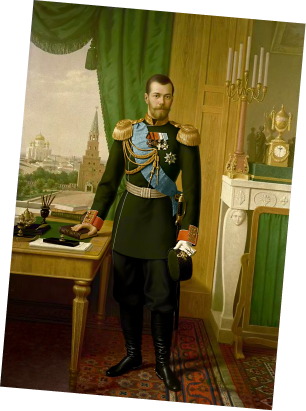Interesting Census Facts from Around the World
Censuses Worldwide
Nicholas II was the first Russian monarch to take part in a population census. He recorded his main occupation as "the owner of the Russian land" and that of his wife as "the mistress of the Russian land." The Tsar recorded his "secondary occupation" as "landowner" and that of the Tsarina as "trustee of the houses of diligence"
Since the 2001 census, the census form in Australia has included the question of whether the person consents to store his or her personal data in the National Archive for 99 years. If consent is obtained, the census form is sent to the archive and nobody (not even a court) can access it until the expiry of the said period, after which the data are made public. The first batch of such information, obtained in the 2001 census, will be made public in 2100.

«The Profession is Mysterious.»
Population censuses are not the only kind of censuses that are held in Russia. There are also agricultural censuses and "business censuses" (comprehensive statistical observation of small and medium-sized businesses).
In the US the requirement to take census is stated in the Constitution. The reason for that is that the data collected in censuses are used to determine how many deputies are delegated by each state to the House of Representatives.
In Britain censuses previously included a question about a person's profession. W, therefore, know that in 1841 Britain had one dealer in honey bees, 20 peg-makers and 9 persons who called themselves "artificial eye makers". The famous illusionist Harry Houdini, who was visiting a friend in Britain during the 1921 census, called himself a "mysteriarch".

«A census every 10 years»
It is sometimes necessary to count people as quickly as possible. The ancient Greek historian Herodotus describes how Xerxes, the ruler of Persia, counted the strength of his army: "The counting was done by first packing ten thousand men as close together as they could stand and drawing a circle round them on the ground; they were then dismissed, and a fence, about navel high, was constructed around the circle; after that other groups of ten thousand men were driven into this fenced area until the whole army was counted. The troops were then divided into tribes." According to Herodotus, the troops thus counted amounted to 1.7 million, but contemporary historians doubt the reliability of the figure.
«Inca Census»
The Incas held a unique census in the 15th century: they recorded the information which was collected using the Kipu nodular language, which is not quite the same as writing, and which keeps count by means of nodes tied on ropes.

Many countries aim to take censuses every ten years, usually at the start of a new decade. Recommendations to follow that procedure were endorsed by the Statistical Congress of Saint Petersburg in 1872.
The Moscow Archives have begun work to digitalize and make publicly available accounts of the "revisions" that were carried out in pre-revolutionary times. People will be able to use the digitalised information to find out about their ancestors: https://cgamos.ru/skazki/